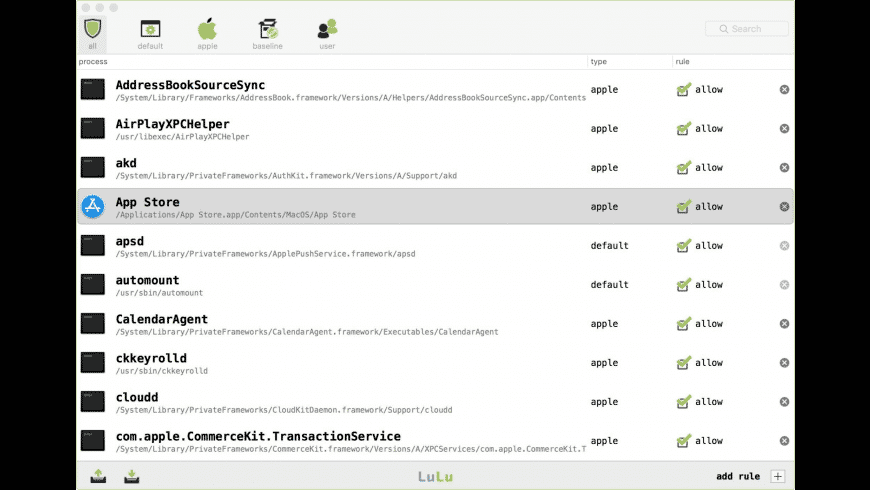Assuming you’ve downloaded the Little Snitch Disk Image (.dmg file) to your Downloads folder, open a new Terminal window and enter the following command to verify the cryptographic signature of the downloaded file:
Correction: Quora User has told me that Little Snitch is a MacOS application. The argument does still apply - MacOS software can be closed source and as such you don’t always know what it’s doing. Ubuntu (and indeed the Linux kernel) has Apparmor. Discover powerful applications such as Little Snitch, LaunchBar and Micro Snitch. Products Little Snitch Micro Snitch LaunchBar Internet Access Policy. Little Snitch. Makes these Internet connections visible and puts you back in control! Decide immediately. View your Mac’s network activity from three perspectives – a list of apps and servers, a web of connections across the globe and a one hour history of data traffic.
codesign --verify -R='anchor apple generic and certificate leaf[subject.OU] = MLZF7K7B5R' ~/Downloads/LittleSnitch*.dmg
If the result of this command is empty (no error message is shown), the file is intact and properly signed by Objective Development.
However, if an error message is shown (like “not signed at all” or “failed to satisfy specified code requirement(s)”), this indicates that the file was maliciously modified and is no longer signed by Objective Development. In that case you should NOT open the disk image file.

| Developer(s) | Objective Development Software GmbH |
|---|---|
| Stable release | 4.5 (March 30, 2020; 19 days ago[1]) [±] |
| Written in | Objective-C |
| Operating system | macOS |
| Available in | German, English, Chinese, Japanese, Russian |
| Type | Firewall |
| License | Proprietary |
| Website | https://obdev.at/products/littlesnitch |
| Usage | |

Little Snitch is a host-based application firewall for macOS. It can be used to monitor applications, preventing or permitting them to connect to attached networks through advanced rules. It is produced and maintained by the Austrian firm Objective Development Software GmbH.
Little Snitch Mac App Store
Unlike a stateful firewall, which is designed primarily to protect a system from external attacks by restricting inbound traffic, Little Snitch is designed to protect privacy by limiting outbound traffic.[2] Little Snitch controls network traffic by registering kernel extensions through the standard application programming interface (API) provided by Apple.[3]
If an application or process attempts to establish a network connection, Little Snitch prevents the connection. A dialog is presented to the user which allows one to deny or permit the connection on a one-time or permanent basis. The dialog allows one to restrict the parameters of the connection, restricting it to a specific port, protocol or domain. Little Snitch's integral network monitor allows one to see ongoing traffic in real time with domain names and traffic direction displayed.
The application (version 4) received a positive 4.5/5 review from Macworld.[4]
References[edit]
- ^'Release Notes – Little Snitch'. Retrieved March 31, 2020.
- ^'Little Snitch 4'. Retrieved July 20, 2019.
- ^Little Snitch 3 - Documentation. Objective Development Software GmbH. 2013.
- ^Fleishman, Glenn (September 8, 2017). 'Little Snitch 4 review: Mac app excels at monitoring and controlling network activity'. Macworld. Retrieved July 20, 2019.
External links[edit]
- Official website



